

Growing Beans in the Classroom
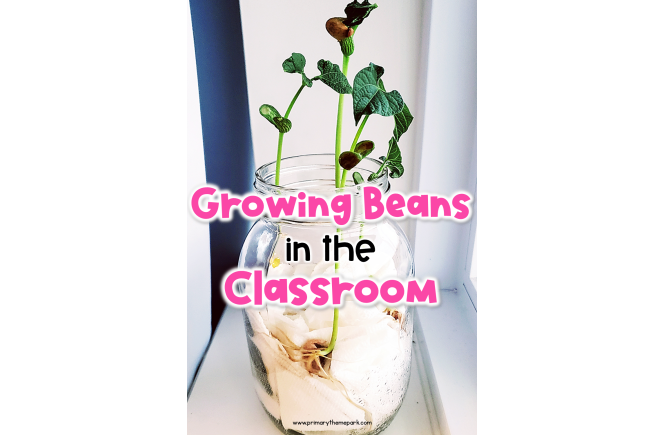
Nothing like setting up an experiment in the classroom and it not turning out exactly how you expected, right? Well, I’m here to share all my tips and tricks for growing beans in the classroom so your experiments are a success!
- dried beans (pole, bush, or lima beans)
- paper towels
- spray bottle of water
- clear glass jar or small clear plastic cup
My #1 Tip for Success
Before I go any further, I want to tell you the one thing I feel makes or breaks this experiment. It’s what will get you tall, lovely sprouts like the picture above in only ten days:
Soak the Beans in Water Overnight!
I can’t stress enough that you should soak the beans in water overnight beforehand. I’ve tried the experiment with and without soaking the beans. Soaking the beans boosts the germination process and you see roots in a day or two. Within ten days, the bean sprouts have a tall stem with leaves growing out of the top of the jar. When I’ve not presoaked the beans, it took five or six days for the first root to begin to emerge. Even then, the entire germination process seemed to go a lot slower.
Now that you’ve soaked your beans, let’s start the experiment!
- Fill the container about halfway with paper towels.
- Place several beans on the outside of the paper towels in the container so you can watch them grow.
- Spray the paper towels with water to dampen them.
- Place the container near a window or on a window ledge.
- Observe and watch the beans grow over the following days and weeks!
Can the Seeds Grow Without Soil?
We teach students that plants need water, air, sunlight and soil to grow. Some students may wonder how these seeds will grow without soil. It might be helpful to point out that you can germinate seeds, or help them start to grow, without soil. Why? It’s because the food the seed needs to start growing is inside the seed. The seed provides food for a short time and then you must plant the seedling in soil for it to continue to grow.
Experiment Variations
This experiment helps students learn the basic needs of seeds and plants. What happens if they don’t get what they need?
Prepare a few extra jars with beans and alter some of their growing conditions. Observe what happens.
- No water : Don’t soak the beans in water overnight or wet the paper towels in the container.
- No air : Use a sandwich bag for this one. Use a straw to suck as much air from the bag as possible before zipping it shut.
- No sunlight : Place the jars away from windows or even in a dark space like a cabinet.
- Not enough space : Place seeds in a group touching each other.
- No soil : Seeds will germinate without soil, but will they keep growing and produce fruit (beans) if left in the container with no soil? This will take a lot longer to observe. Another option is to plant the beans in sand. Give them water and sunlight, and observe what happens.
Growing Beans FAQs
What beans did you use? I used pole and lima beans. I’ve successfully germinated both kinds.
Do I need beans from a seed packet or can I used dried beans from the grocery store? While you may certainly use a purchased seed packet of beans, I’ve always had success germinating and sprouting dried beans I’ve brought at the grocery store. I recommend soaking and germinating a couple of dried beans at home to make sure your dried beans will work before doing it with your students.
How long will it take to see anything? One or two days if you soak the beans overnight, five or six days if you don’t soak them. I soaked my beans overnight and put them in a jar and baggie. The very next day I already saw the root coming out of most of the beans.
Can I do this experiment anytime of year? I think so! I live in the Midwest and germinated these seeds towards the end of January! Even though it was cold outside and the windows themselves felt cold, there was enough sunlight and warmth to begin germination. If you want to keep the plants alive or transfer them into a garden, you will need to begin germination closer to actual planting time.
What if the paper towels get dry? Use a spray bottle of water to moisten the paper towels if you feel they are too dry.
Can I germinate beans in a sandwich bag? Absolutely! Just place a damp paper towel and several beans in a zip-top sandwich bag and seal it. Then tape or place the bag on or near a window and watch them grow!
Students learn so much about plants by growing beans in the classroom. It’s really fun to watch the little beans grow so quickly. Sometimes there’s a huge difference from day to day. I hope these tricks and tips help you and your students become expert germinators!
More Plant Resources
Parts of a Plant Lollipop Activity
Parts of a Plant Painting
Plant Videos for Kids
Plant Unit for Kindergarten and First Grade
29 Comments
I really enjoy to see the plant growing.
hi this is cool info
Hey there! I am soaking my Lima beans to grow in our classroom and I noticed they are wrinkling and some of them are splitting. Is this normal? Thanks so much for your info! We’re excited to try it!
That’s a great question! The wrinkles are completely normal. As for splitting, when the inside of the bean rehydrates quicker than the outside, the bean will split. It happens sometimes. You can have students examine the split beans to see what’s inside the seed. Good luck and I hope your students enjoy growing their beans!
Hi, I’m a PreK teacher and have found the past several years, that the beans get moldy in the children’s ziplock bags. How can I avoid the mold?
That’s a great question! I might try doing it with glass jars instead of baggies. I’ve never had an issue with mold when growing them in glass jars like I shared in the blog post. I also leave the lid off to allow air circulation.
If you need to use bags, you might try leaving the top open or making a few holes near the top of the zipped bag. Another idea is to only leave the beans in the bags for just a few days and plant them as soon as you can.
I hope these ideas help! Good luck!
Hi Cara! Two easy tricks are 1) spritz rather than soak the towels in water 2) staple a horizontal row of staples about two inches down the bag and place lima beans along the staples before sealing. Veteran teacher tip—best of luck!
They need to wash their hands thoroughly before “planting”.
When do you put the bean in soil?
Hi! I plant them as soon they look like the one pictured with roots, stem, and a few leaves. They shoot up very quickly, so it’s not long before they’re ready to be planted.
Now that my granddaughter brought home her bean,what do we do with? A single plant. Does it need something to climb? Or will it get bushy? We weren’t given any follow up info sadly. HELP
That’s a great question! If you can find out what kind of bean it is, that would be helpful. Some beans are runners and need to be staked or have something to climb, while others don’t. Other than that, just plant it in soil and watch it grow!
I tried this experiment with my class and we have a few moldy plants. We wet the paper towel again every day. Does this mean the plants are dead?
Hi! If you do this experiment again, I suggest just lightly spraying the paper towel with water whenever it feels dry instead of watering them each day. If you soak the beans beforehand, they already have a good bit of water inside them. I also take the top off of the jar after they begin sprouting so air can circulate. Hopefully, doing those two things will stop the mold problem. Good luck!
Suggestions on the bean plant being towering over the cup? Do I need to get dowel rods? I feel bad because my kids are taking them home and I wanted them to be successful .
That’s a great question! Even though the plants stick up over the cup, they’re usually sturdy enough to send home. If you want to give them extra support, you might stick a straw in the cup and gently tie the plant to it. I hope your students have a great experience sprouting seeds!
hi im in 5th grade and when i grow up i will show my children this and might do this for their birthdays
If the seeds have mold, does that mean they are dead? Or can I salvage them?
Additionally, how do I safely transfer them to plant so that students can take home? Do I need a certain type of soil? A pot?
Hi, Alex! Those are great questions. First, if your seeds have mold, I would throw them out and start over. When you try again, here are my tips to avoid mold:
1. Just lightly spray the paper towel with water whenever it feels dry. If you soak the beans beforehand, they already have a good bit of water inside them so they don’t need lots of water. Too much water in the jar or bag will allow mold to grow.
2. Take the top off of the jar after they begin sprouting so air can circulate. If you use zip-top bags, open the bags after the beans sprout.
3. Avoid direct sunlight for long periods. Too much heat inside the jar or bag will cause mold to grow. The beans will still sprout near a window with indirect sunlight.
If you want to plant them for students to take home, use potting soil (not garden soil) and any small plastic container like yogurt cups, bottom half of a water bottle, or other small plastic cups you might have in your recycling bin.
I hope those ideas help! Good luck!
Will pinto beans grow?
Hi, Maria! I’m so sorry I’m just seeing your question! I’m not getting emails when someone posts a comment like I usually do, and I’m not sure why. I haven’t tried pinto beans because I’ve read they don’t sprout as reliably as other beans. It might be interesting for kids to try to grow pinto beans along with other types of beans to see which ones sprout the best.
I have jars without lids. Do I need lids to begin this process?
That’s a great question! You don’t need lids to begin the process. You might put plastic wrap or aluminum foil over the jar for the first few days. I think it’d be interesting for kids to observe a covered jar and one that isn’t. Then, they can see if covering the jar affects growth.
This activity is perfect for children who love to explore what is in store for them in the real world. Thank you so much for sharing this.
- Pingback: Parts of a Plant Craft - Primary Theme Park
- Pingback: Parts of a Plant Activity - Primary Theme Park
- Pingback: Plant Videos for Students - Primary Theme Park
- Pingback: Hurry Up and Wait….. – Lacey’s Learning Log
- Pingback: 25 Fun and Engaging Plant Life Cycle Activities for Kids - Teaching Expertise
Leave a Reply Cancel reply
Your email address will not be published. Required fields are marked *
Using Mung Beans in the Lab
- Share to Facebook
- Share to Twitter
- Share via Email
Age Ranges:
Mung beans are cheap, reliable and easy to germinate, and offer a useful way to look at the germination process.
- Plant growth : Using hydroponics to explore what plants need to grow. Resource: What do plants need to grow?
- Enzymes : Resource: Phosphatase enzymes in plants
- Idea : Explore whether bean roots always grow downwards
- Idea : Investigate the effect of light on growing seedlings
- Idea : Investigate the effect of water on growing seeedlings
- Idea : Observing sprouting mung bean root hair cells
Teaching Topics
- Plant Growth
- Plant Nutrition
- Hydroponics
Description
Mung Beans, Vigna radiata
Mung beans are legumes (members of the Fabaceae family), and are most commonly used in the UK for growing nutritious bean sprouts. Mung beans are annuals, growing up to about 1m in height. The first flowers appear seven to eight weeks after planting and the crop reaches maturity in 12 to 14 weeks. The mung bean plant comes originally from India, but is now widespread throughout the tropics.
Growing and sourcing
Obtaining : Buy fresh seeds from suppliers including Blades Biological. Seeds must be fresh to germinate.
Propagating : Germinate from seeds. This video demonstrates the germination of mung beans with both cotyledons and roots visible. As demonstrated in the film, mung beans can be planted in a clear tank using a seed compost to observe root formation.
Compost : Use a seed compost for germinating these seeds.
Light : Light is needed only once the cotyledons are ready to open. A windowsill is suitable.
Water : Keep damp without soaking.
Temperature : A warm room is suitable.
Feeding : There’s no need to feed these seedlings.
Notes : Look out for signs of ‘Damping-off” in your seedlings.

- Agriculture and farming
- Cells and tissues
- Nutrient cycles
- Photosynthesis
- Plant growth
- Plant nutrition
- Plant reproduction
- Plant responses
- Respiration
- Plants in the Science Curriculum
Related content
Teaching resources.
- Student Sheet 5 - Investigating Seed Germination
- How Science Works - What do plants need to grow?
- Using Broad Beans in the Lab
- Engage your students with enzymes
All Science Fair Projects
1000 science fair projects with complete instructions.
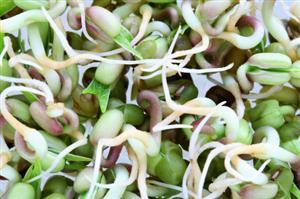
Watering Plants: Does it Make a Difference?
Science fair project description.
The greater the amount of water, the faster the growth.
Water and plant growth Water sustains life, and is therefore important to all living organisms on our planet. These include plants, which will wilt, become dry and die in the absence water. The actual amount of water needed by a plant to grow will depend on the type of soil used, the size of the pot, the species of the plant and the age of the plant. A soil’s water retention properties will determine the amount of watering required. Soil that is poor in retaining water will require more frequent watering, whereas soil that has good water retention properties will require less frequent watering. The size of the pot is also important, as it determines the amount of water that can be added to maintain the required soil moisture. The size and number of leaves, together with the size of a plant’s stem, will give us an estimate on the appropriate amount of water that a plant needs. Young plants tend to require more frequent watering to maintain the moisture near the surface of the soil, as its roots have not grown deep enough and will therefore only be near the surface of soil. On the other hand, an older plant will require less frequent watering .

Scientific Terms
Materials required for this science fair project: - 1 packet of radish seeds - 10 small plastic pots - Soil required to fill the 10 pots - Tap water - 1 measuring cylinder - Ruler (1 meter) - 1 marker
1. The independent variable in this science fair project is the amount of water used every day– 20ml, 40ml, 60ml, 80ml and 100ml once a day or twice a day. The dependent variable is the height of the mung bean sprouts, which is determined by measuring the average height of the plants in each test group. The constants (control variables) are the environment that the plants are kept in (temperature, humidity, light, etc), the species of plant used, the size of the pot and the type of soil. 2. Fill the ten pots with the same amount of soil , and place ten mung beans in each pot. (More than ten mung beans seeds can be placed in each pot to act as backup in case some of the beans do not germinate. Remove any unwanted plants once germination has occurred). 3. Use the marker to label the ten pots as “once” or “twice”, followed by one of the following measurement: 20 ml, 40 ml, 60 ml, 80 ml or 100 ml. 4. Water the pots labeled “once” once a day, and the pots labeled “twice” two times a day, using the amount of water indicated on the pot. Repeat this procedure for the next ten days. 5. Measure the heights of the plants on the 10th day. Calculate the average height of the radish plants in each pot by totaling the heights and dividing it by the number of plants. Record the average height in the table given below.
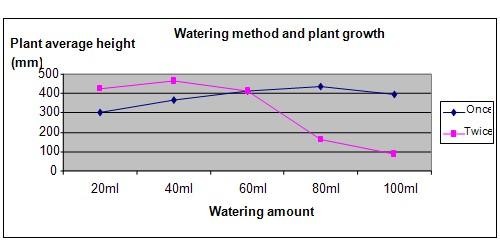
Plants watered with 40 ml of water twice a day were observed to be the tallest after ten days, followed by plants watered with 80 ml of water once a day. Number of times watered per day Effect of different amount of water on the height of mung beans growth (mm)
The graph below represents the results of our science experiment.

The experimental data and analyzed results support our hypothesis that the greater the amount of water, the faster the growth rate, but only up to a certain point. If too much water is given to the plants, their growth rate fell. Research shows that too much water in the soil is detrimental to plant growth, as wet soil tends to cover a plant’s root with water and therefore deprive it of oxygen. This cause the roots to rot will eventually lead to the death of the plant.
Also consider
What would happen if this science fair project was repeated using other species of plants such as corn and green peas? The experiment can be repeated by placing the pots under a shade or directly outside under the sun.
How to water plants - http://home.howstuffworks.com/how-to-water-plants.htm How to water a plant – how much water should I give my plant - http://www.gardeningknowhow.com/indoor/how-to-water-a-plant.htm
Related videos
Related Science Fair Project Ideas
Curricular Materials to Accompany the McIntosh Apple Development Poster Distributed by the Education Committee of the Botanical Society of America Posted March 2001
Grade Levels: 6-8; 9-12
- Create a hypothesis about the effects of light and volume on the growth of mung bean sprouts.
- Observe, describe, and measure growth in mung bean sprouts.
- Record seedling growth in tabular form.
- Analyze data by calculating and graphing average seedling growth rates.
- Draw conclusions from results about the relationships between environment and growth in mung bean sprouts.
Background : A seed contains its own life support system. When stimulated to germinate, seeds use stored food reserves to grow into sprouts. A sprout is a tender, often edible, seedling that is produced following seed germination. As the sprout begins to develop and use up its stored reserves, the seedling needs light and carbon dioxide to continue growth. In this experiment, students will examine how the amount of carbon dioxide and light changes the growth of a mung bean's sprout. The equation of photosynthesis shows the relationships among carbon dioxide, light, and growth:
6 CO 2 + 12 H 2 O --- light ----> C 6 H 12 O 6 + 6 O 2 + 6 H 2 O .
In this expression, C 6 H 12 O 6 represents simple sugars that are used by the plant for energy and structural materials like wood. In other words, they are required for growth. Carbon dioxide ( CO 2 ) is necessary for plants to form those simple sugars. Plants have the capacity to use CO 2 from the atmosphere for this purpose. If students experimentally vary the amount of available carbon dioxide or light, they can observe their effects on plant growth. In this exercise, seedlings are grown in plastic soda bottles. The amount of CO 2 varies with the volume of the bottle and light is manipulated using aluminum foil. Additional volume will allow the seedlings to grow to a greater size. Light will have different effects depending on how long the sprouts are allowed to grow. In all cases, sprouts grown in low light will be longer than sprouts grown in more intense light. However, after the food reserves available in the seed are used up, a plant grown in the dark will cease to grow and will be outgrown by the plants grown in the light. In addition to reinforcing plant science content, this lab expects students to apply the scientific method. After learning basic information about growth and photosynthesis, students formulate a hypothesis about the growth of their mung bean sprouts in different treatments. After they have gathered and compiled the data, students will compare their experimental results to their original hypothesis and draw appropriate conclusions.
- Several 0.5, 1, and 2 Liter empty, clean, and clear plastic soda bottles. Rinse the bottles, but do not wash them in detergent which may inhibit seed germination or growth
- 10 mung bean seeds per student (Mung beans are available in most large grocery stores. However, if they are not, other peas or beans will work fine)
- paper towels
- aluminum foil
- metric rulers
- After giving the students information about plant growth, have them write a hypothesis about the relationship between the experimental variables and plant growth.
- Assign students to a soda bottle size (0.5, 1, or 2 Liter). There should be equal numbers of each size soda bottle distributed among the class.
- Have students place 10 mung beans in their soda bottle.
- Each student should rip one paper towel into several pieces (approximately 1 inch by 1 inch) and place them in their soda bottle.
- Students should fill the cap of their soda bottle with water and pour the water into the soda bottle. No more than this amount of water is required.
- Securely tighten the cap and do not reopened during the experiment.
- Assign the students to light and dark treatments. Each size bottle should have at least two light and two dark treatments.
- Record the treatments.
- Cover dark treatment soda bottles with aluminum foil.
- Place all bottles near the windowsill so the light treatments will receive sunlight. Keep both light and dark treatments to maintain as equal environments within them as possible. However, note that light treatments will be exposed to higher temperatures.
- Each day, have the students measure and record the length of the sprouts to the nearest mm using a metric ruler. Record the length of five sprouts and calculate the average. Record this information. Students will record data for 10 days.
- At the end of each recording for the day, have the students calculate averages for each treatment.
- After 10 days, create a line graph with the x-axis representing time in days and the y-axis growth in length. Use a different line showing averages for each of the treatments. There should be a total of 6 lines.
- Have students draw conclusions from their data and results. They should compare their experimental results to their original hypothesis. If their hypotheses are not supported by their results, encourage students to explore reasons for the lack of support. Do the results lead to new hypotheses? Students (and scientists) learn from experiments that seem to have failed because hypotheses are not supported. Hypothesis testing involves an evaluation of the causes of patterns and observations. One is not always correct about those causes at the outset.
References :
Introductory plant biology books will discuss germination and growth of seedlings. Several are listed below.
Raven, P.H., R.F. Evert, S.E. Eichhorn. 1998. Biology of Plants . Worth Publishers Inc., New York. Stern, Kingsley R. 2000. Introductory Plant Biology , 8th ed. McGraw Hill, Dubuque, IA. Uno, Gordon, R. Storey, and R. Moore 2001. Principles of Botany , 1st ed. McGraw Hill, Dubuque, IA. Burnie, David. 2000. Plant. Dorling Kindersley Eyewitness Books, New York.
For more information about sprouts see the International Sprout Growers Association
This activity is based on an exercise presented by Ken Blom, Niskayuna School District, Niskayuna, NY and was developed and edited by Amy Russel and Steven Rice, Department of Biological Sciences, Union College, Schenectady, NY.
Classroom Project: 10 Easy Growing Beans For A Science Experiment
reviewed by Truman Perkins
With the advent and revamp of the education system, the classroom has become the area of exploring new horizons. New and more engaging activities are provided to the students in schools to make them learn more about the environment that is waiting outside for them. Not only academic but creative forte is established through these activities.
One of these innovative activities is enlightening students about nature by a one on one interaction with it. Science experiments using plants are well-known.
However, the best part for students is to be able to get hands-on practice and interplay between the students and nature. A practical and entertaining way to accomplish this is to grow bean plants in the classroom.
Beans are perfect for growing indoors, and one can see them sprout from a seedling giving the children all the amusement and excitement they need.
The most natural experiment which can also be performed with preschoolers is growing beans in a bag. The best seeds for this experiment are Pinto beans, Mung beans, Lentils, and Lima beans.
- Pinto beans
- Lentils and Lima beans
- Snap Bush Green beans
- Yellow beans
- Pole beans, Yardlong beans, and Runner beans
- Recommendation
Easy Growing Beans
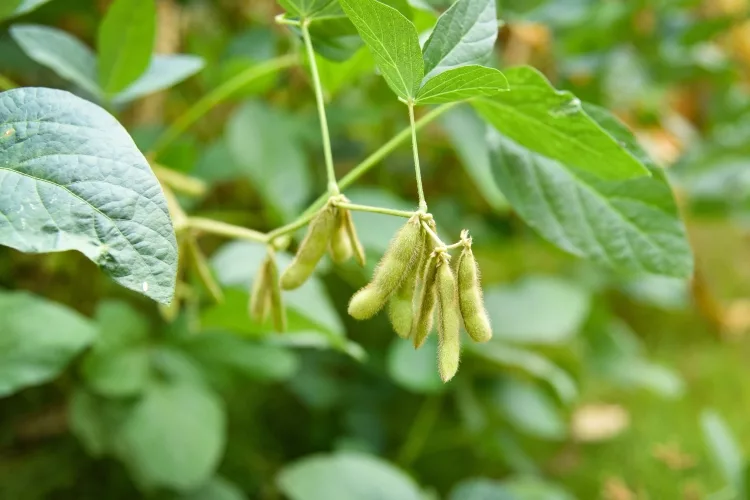
1. Pinto beans
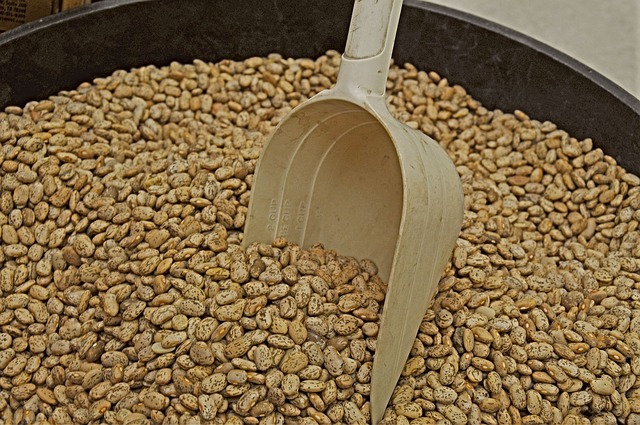
They are one of the fastest-growing beans, which makes it even better for growing in a classroom. Pinto beans are one of the most widely consumed staple foods in Northern Mexico and the US.
It takes around 90 days for Pinto beans to grow. A zip back is first tied to nails onto the window facing the sun directly.
Dried Pinto beans are then placed inside the bag with a wet or damp paper towel. After some days, we will see the beans sprouting.
2. Mung bean:
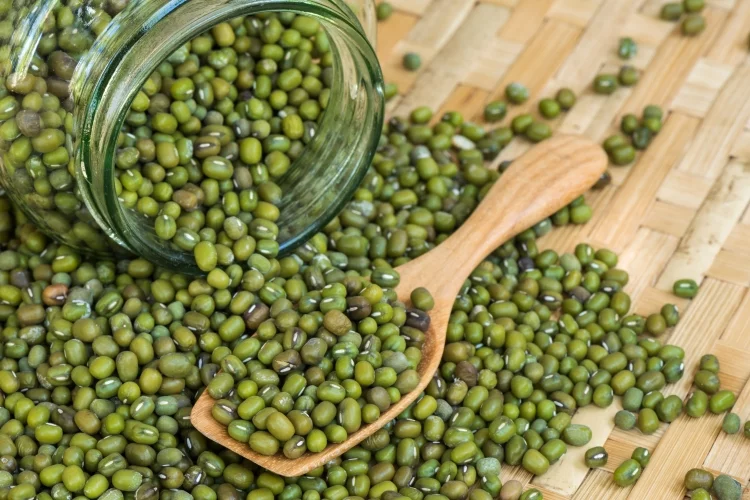
They are also known as green gram or moong, or maash is widely used in Southeast Asian households. The fascinating part about Mung bean is that it can be grown in a bag indoors. We can grow Mung beans in a hemp sprouting bag after soaking the seeds and prepping the bag for germination.
After putting the seeds in a wet bag, rinse and drain the bag at least twice or thrice in one day. With each rinse cycle, look for spouting of the seeds.
3. Lentils and Lima beans
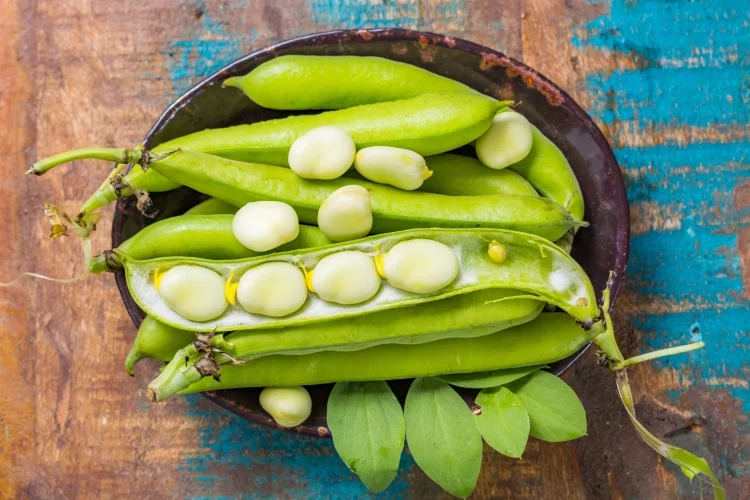
These can also be germinated in a bag in classrooms, and their progress will be a visual delight for the school children. The students can help participate in every step of the sprouting.
First of all, ask them to wet a paper towel. Then wrap some seeds in the middle of the damp cloth and cover the second time. Put the seeds wrapped in the towel in a transparent ziplock bag.
Now ask the children to find the right sunlight spot to place the container, facing the sunlight directly. Ask them to check on the beans every day to see sprouting and then harvest their efforts after about 60 days.
Also, Lima seeds are more abundant, which makes it easy for little hands to grasp them.
4. Snap Bush Green beans:
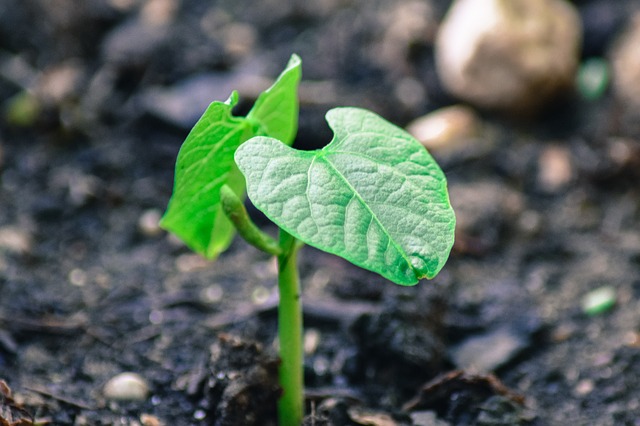
A bean that is best to grow for a science project is Snap Bush Green beans. They require warm climates. Seeds germinate in 4 to 10 days in a pot, which contains the right mix of soil and fertilizer.
After the seeds germinate, the students can take them home to plant in their gardens. This is a great way to help them care about nature, and they will feel as help in assisting mother nature.
5. Yellow beans:
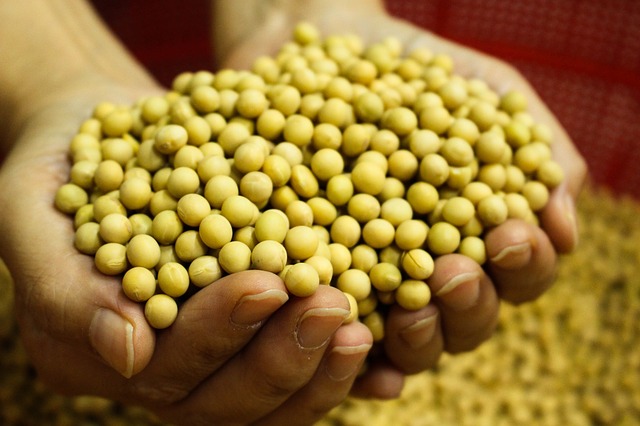
Yellow beans are an excellent choice for doing science projects. The seeds germinate in less than two weeks. But an interesting experiment can be carried out with the children.
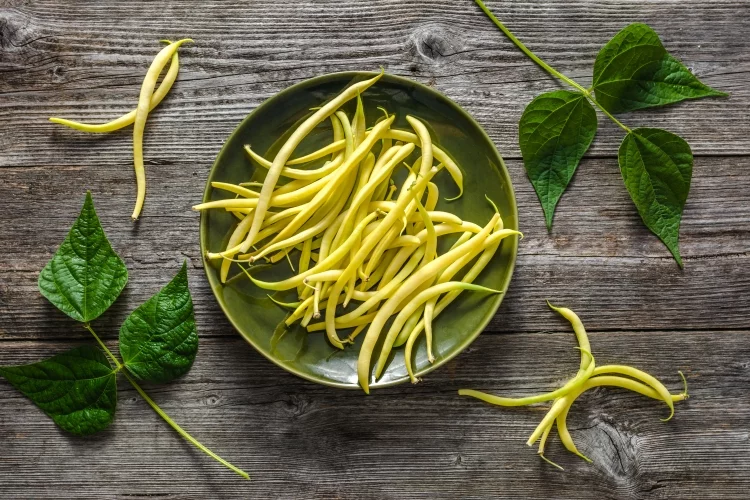
Divide the children into two groups. One responsible for bean seeds in sunlight and the other for darkness. Half the seeds are placed in a sunny spot while the other containers are covered with cardboard, so no light reaches them.
It is an excellent way of teaching young students that light plays a vital role in the germination of seeds and for overall plant growth.
6. Soybeans:
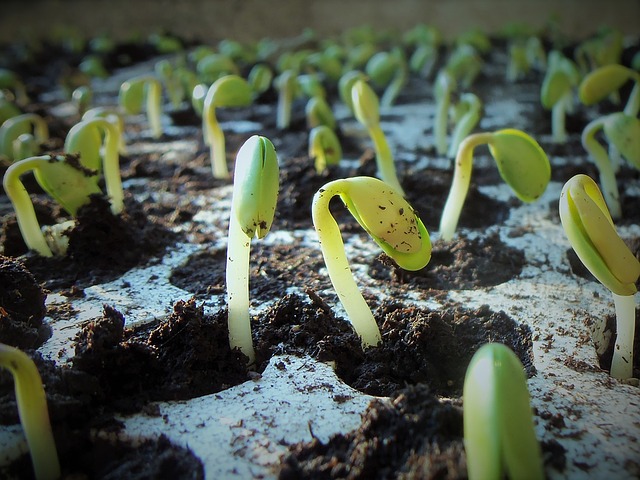
If the time is short, then Soybeans are the best variety to explain germination in a classroom. Small pots can be used for this in addition to bags, mix soil with fertilizer, and place the seeds in between.
Water thoroughly. The seeds germinate within 48 hours, and the radicle emerges from the seed. In the next 7 to 10 days, small cotyledons appear, which appear as leaves.
7. Fava beans:
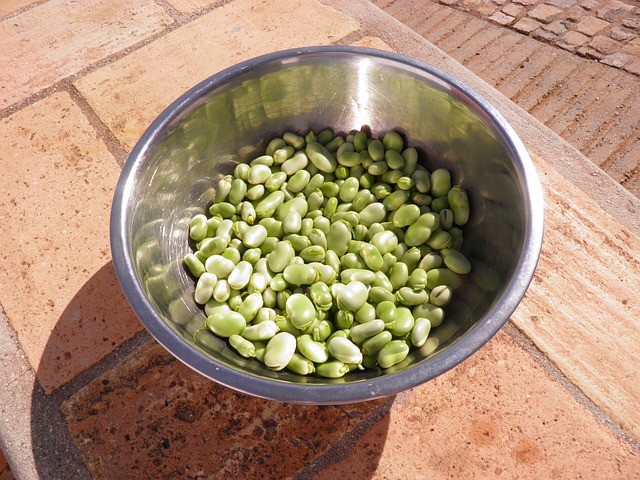
Another variety of Shell beans that can be grown in classrooms and science projects is Fava beans.
First, prepare a pot with soil and fertilizer and then place the bean seeds 4 to 5 inches apart from each other about 1 inch deep. Water thoroughly.
Germination time is 7 to 14 days. The students can see the emerging radicle from the seeds. It is better to use transparent glass containers for easy visibility.
8. Pole beans, Yardlong beans, and Runner beans:
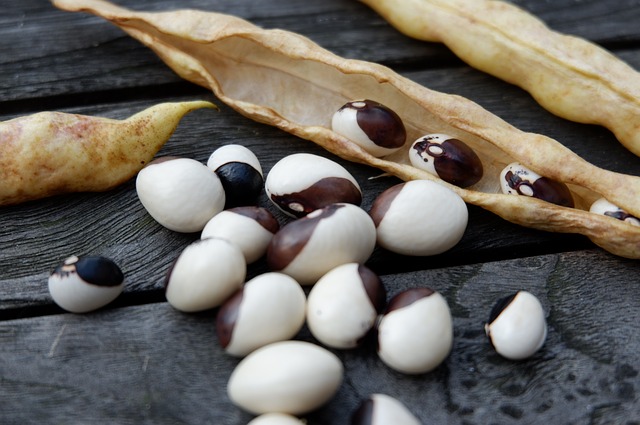
A fun and interactive experiment are to determine the germination rate of different seeds. We can take a transparent zip-lock bag. Make columns on the bag with a permanent marker.
Place a damp towel inside the container. Now ask the students to put different types of green beans inside the bag within each column, including Pole beans, Yardlong beans, and Runner beans.
Now place them in a spot with direct sunlight. After 5 to 7 days, check for germinating seeds. Ask the students to note which seeds sprout first, second, and third.
Conclusion:
These experiments provide the student's opportunity to learn by understanding and seeing the results instead of cramming. It also instills in them the sense of leadership, and they consider themselves equal participants in every classroom project.
After the process of germination starts, the seedlings can also be given to students to take to their homes and care for them further.
Recommendation:
10 High Oxygen Producing Aquarium Plants
Rice Water for Plants to Get Maximum Growth
How to Grow Leafy Vegetables in Pots at Home?
How to Attract Parrot to your Garden & Balcony?

About Truman Perkins
Comments for "Classroom Project: 10 Easy Growing Beans For A Science Experiment"
Check These Out
Get new FREE Gifts . Or latest free growing e-books from our latest works.
Disable Ad block to reveal all the links. Once done, hit a button below

Seed germination requirements

- Mung bean seeds, 15-20 per tub. Optional: soak in water a couple of hours before the activity to speed up germination without changing the appearance of the seeds.
- Tub for each condition at each table group (I use cream cheese/deli tubs - they are shallow and stable).
- Paper towels.
- Water to wet towels.
- Masking tape to label tubs
Plants come from seeds. Why don’t these seeds turn into plants? They need certain conditions to germinate. We’ll test what seeds need to grow into plants.
Work in table groups to set up 3 experiments: 1. seeds on wet paper towel (get water and air and light) - crunch up a paper towel in the bottom of the tub, wet it, then lay over a folded paper towel to make a damp, flat surface for the seeds. Layer some saran wrap over the top with small holes punched in it, to let in the light, but keep water from evaporating away as fast. 2. dry seeds in tub (get air and light, no water) 3. seeds under water (get water and light, no air) - put seeds in a tub filled with water. 4. seeds on wet paper towel wrapped in foil (get water and air, no light) - set up as 1 then wrap in foil to keep the light out. Open each day briefly to let plenty of oxygen in. 5+ Add other variables that students come up with that are dooable e.g. adding soil (the seeds have water and air, but no light if they are buried in the soil). e.g. keeping the seeds cold e.g. damaging the seeds (mimic damage by pests by puncturing or cutting the seeds)
Optional: make predictions about what will happen. Doesn’t matter whether you are right or wrong. It just gets you thinking about it.
Leave tubs in a warm spot for a week. Make sure the wet conditions stay wet - check at least once a day. The seeds under water will need to have their water changed, so that mould growth does not take over.
One week to 10 days later: Did you have a look during the week at your seeds? What did you notice? Look at all your experiment dishes. What do you see? The long white thing coming out of the seed is the root, and comes first. Then the shoot, which is green, and might have distinct leaves. Record average root and shoot length for each of the tubs. Combine results into a class chart.
Expected results: The seeds in the dark with water and oxygen grew the most in a week - they had long roots and many had shoots too. The seeds with water in the light grew the next best. They had roots, but they had turned brown at the ends and very few had shoots. The seeds with water but no oxygen grew the next best. They had split open and had sent out a root, but it stopped growing pretty quickly. The seeds with no water did not grow at all. Conclude as a class what seeds need to germinate (water, air, darkness).
Possible additional variables and results: Seeds with soil grow well (they have darkness, wet, oxygen and also nutrients from the soil). Seeds in the cold do not grow well (discuss: seed germination is triggered by the warmth of spring). Seeds that are damaged sometimes germinate (discuss: probably depending on whether the embryo is been damaged or just the cotyledons).
Optional continuation of experiment: Continue the experiment with the plants that are growing OK (should be the seeds in the darkness either on the wet paper towels or in soil), to find out what the plants need once they have germinated. Results should show that plants need light when the leaves appear. With no light, the leaves are present but pale green.
Mung bean seeds need darkness to germinate well. But this is apparently not always the case. Other plants need light, or are not affected by light conditions for germination to happen.
With a grade 3 class, I suspected that some of the students took away that plants need darkness, missing the subtlety that they need darkness for germination, then light for growth once the leaves are formed. If the plants are allowed to grow more once the leaves are formed, distinguish between germination, and subsequent plant growth after leaf formation.
If seeds are soaked beforehand, do not do for so long that they are already making roots. (Overnight soaking is too long). Giving the students dry seeds to start takes a little longer to get going, and gives slightly more variable results.

IMAGES
VIDEO
COMMENTS
Students learn so much about plants by growing beans in the classroom. It's really fun to watch the little beans grow so quickly. Sometimes there's a huge difference from day to day. I hope these tricks and tips help you and your students become expert germinators! More Plant Resources. Parts of a Plant Lollipop Activity. Parts of a Plant ...
Mung beans are legumes (members of the Fabaceae family), and are most commonly used in the UK for growing nutritious bean sprouts. Mung beans are annuals, growing up to about 1m in height. The first flowers appear seven to eight weeks after planting and the crop reaches maturity in 12 to 14 weeks. The mung bean plant comes originally from India ...
The experiment will be carried out by watering mung beans with different amounts of water, and observing their rate of growth | Explore 1000+ Science Fair Projects & STEM Projects! ... The actual amount of water needed by a plant to grow will depend on the type of soil used, the size of the pot, the species of the plant and the age of the plant
Bottle Experiments with Mung Beans: abstract: objectives: background: ... The purpose of this lab is to explore how environmental features like light and volume of air influence growth in mung bean sprouts. ... However, after the food reserves available in the seed are used up, a plant grown in the dark will cease to grow and will be outgrown ...
conditions, will grow and produce more mung beans. • Discuss the objectives of the Mung Bean Germination experiment - to determine the amount of salt mung beans can tolerate before failing to
Activity 2: Sprouting Bean Experiment Data Sheet (printable version) Bean seeds: lima beans, pinto beans, lentil beans, or mung beans work well* ... Which beans are growing more, or less, and why do you think that is? 10. Determine what plants need to survive based on the results of your experiment. Discuss some of the
Design of Experiments, Factorial Design, Mung Bean Sprouts, Significant Factors . 1. Introduction The mung bean (Vigna radiata), alternatively known as monggo or munggo in the Philippines, is a small, green bean that belong to the legume family and commonly consumed and grown as a sprout called mung bean sprouts.Mung
The experiment involved planting mung bean seeds in bottles filled with wet paper towel shreds and recording their growth over a week. Our observations and data analysis provided insights into how light affects the growth of these seedlings.
2. Mung bean: Mung bean: Mung Bean flower. They are also known as green gram or moong, or maash is widely used in Southeast Asian households. The fascinating part about Mung bean is that it can be grown in a bag indoors. We can grow Mung beans in a hemp sprouting bag after soaking the seeds and prepping the bag for germination.
Grow mung bean seeds in tubs under different conditions (oxygen, water, light, and maybe other variables suggested by students) to find out what they need to germinate. ... Work in table groups to set up 3 experiments: 1. seeds on wet paper towel (get water and air and light) - crunch up a paper towel in the bottom of the tub, wet it, then lay ...